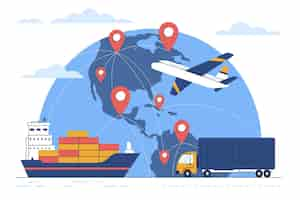
 The global economy is the economy associated with financial markets and institutions in which traditional geographic and national boundaries do not restrict economic transactions and consumer activities. The development of the global economy, called globalization, has been characterized by an increasing interconnectedness of national economies. Globalization has been supported by number of factors, including international deregulation of financial markets, technological advances facilitating the careful monitoring of world markets, and increased institutionalization of worldwide economic institutions. In 2012 the largest contributors to the global economy were the European Union (with a contribution of over $17 trillion), the United States (over $16 trillion), and China (over $12 trillion). India, Japan, Russia, the Arab world (the 22 countries in the Arab League), and the “Asian Tigers” (Hong Kong, Singapore, South Korea, and Taiwan) each contributed between $3 and $5 trillion, and the remainder of the world contributed approximately $22 trillion.
The global economy is the economy associated with financial markets and institutions in which traditional geographic and national boundaries do not restrict economic transactions and consumer activities. The development of the global economy, called globalization, has been characterized by an increasing interconnectedness of national economies. Globalization has been supported by number of factors, including international deregulation of financial markets, technological advances facilitating the careful monitoring of world markets, and increased institutionalization of worldwide economic institutions. In 2012 the largest contributors to the global economy were the European Union (with a contribution of over $17 trillion), the United States (over $16 trillion), and China (over $12 trillion). India, Japan, Russia, the Arab world (the 22 countries in the Arab League), and the “Asian Tigers” (Hong Kong, Singapore, South Korea, and Taiwan) each contributed between $3 and $5 trillion, and the remainder of the world contributed approximately $22 trillion.